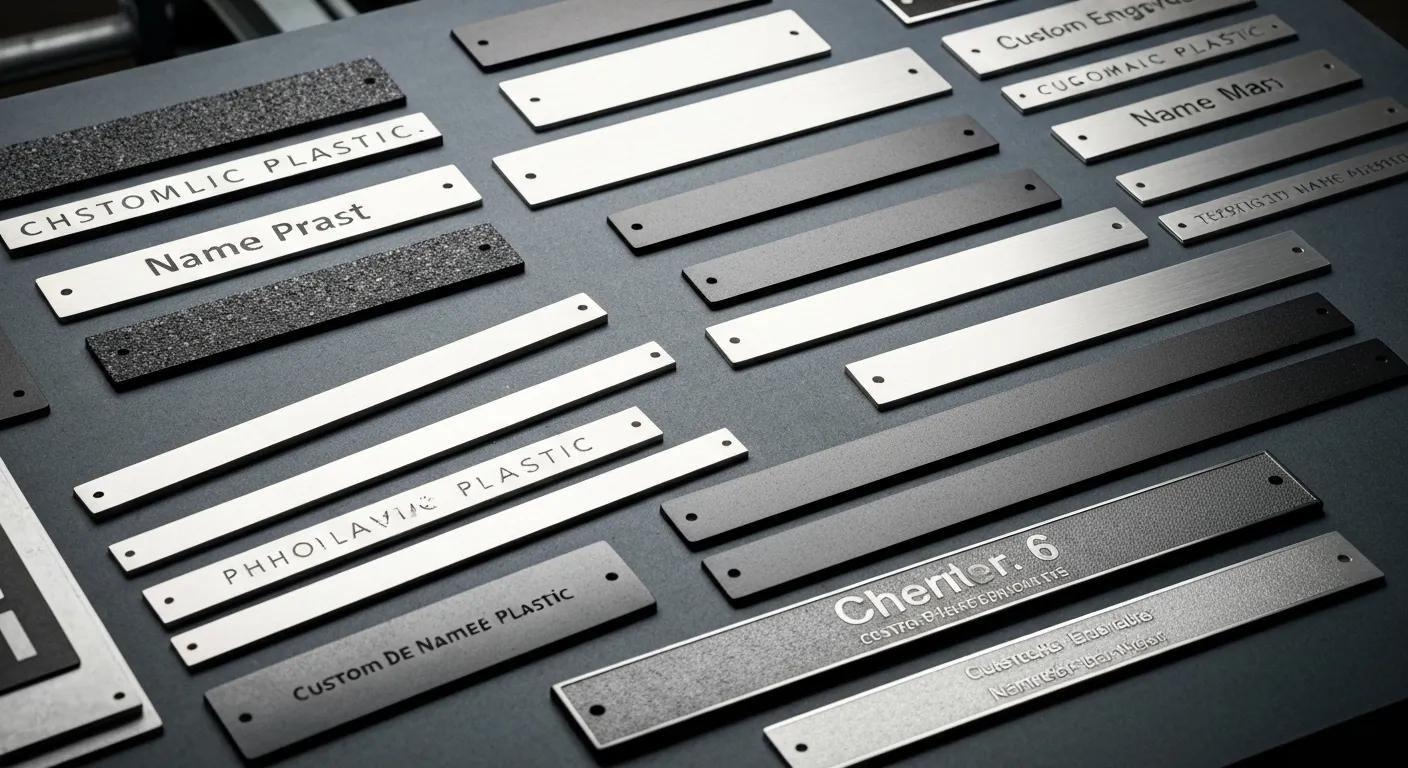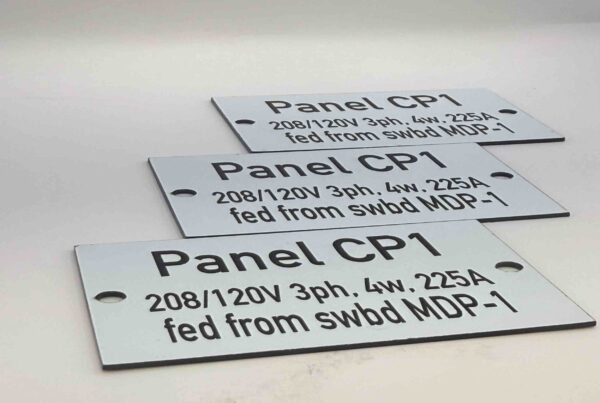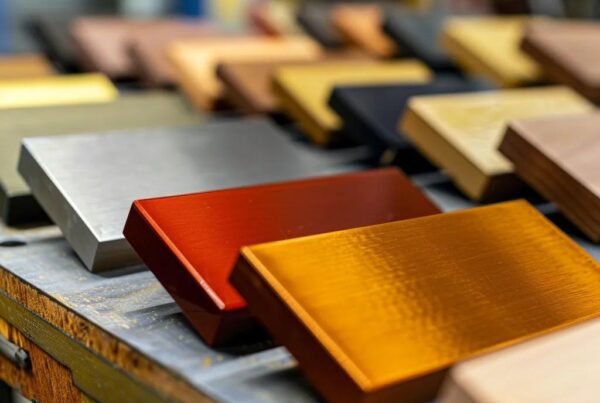Custom Engraved Phenolic Plastic Nameplates vs. Metal: Key Differences and Benefits Explained for Industrial Identification
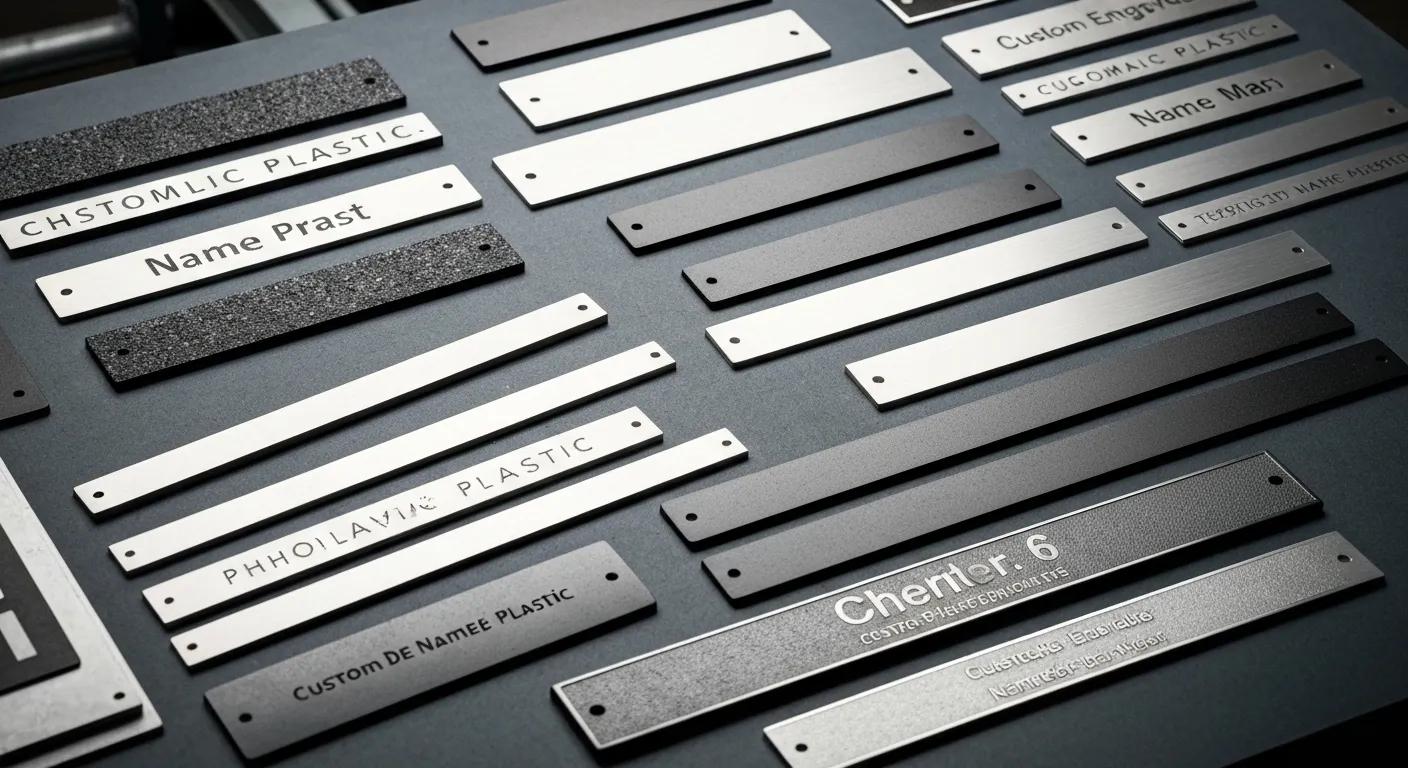
Industrial facilities rely on durable identification solutions to ensure safety, compliance, and accurate asset tracking. Choosing between custom engraved phenolic labels and metal nameplates hinges on performance, cost, and application needs. This guide defines phenolic and metal nameplates, compares their properties, outlines ideal use cases, reviews engraving technologies, evaluates lifecycle costs, and answers common deployment questions. By understanding material science, installation environments, and regulatory requirements, facility managers can select the optimal identification solution for any industrial setting.
What Are Phenolic Plastic Nameplates and Their Key Properties?
Phenolic plastic nameplates are made from a thermoset phenolic resin bonded to paper or fabric layers under heat and pressure. This structure creates a rigid laminate with consistent thickness and engineered performance characteristics that excel in electrical insulation and chemical resistance.
What Is Phenolic Plastic and How Is It Used in Nameplates?
Phenolic plastic combines phenolic resin—a polymer formed by phenol-formaldehyde—with reinforcing substrates to yield a rigid, dimensionally stable material. Manufacturers cut or mold phenolic sheets into tags, then apply laser or rotary engraving to etch crisp legends. Its non-conductive nature makes it ideal for electrical panel labels and safety signage on switchgear.
Phenolic Plastic Properties
Phenolic plastic, also known as lamicoid, is a durable, non-conductive material made from layers of plastic combined through a heating process, making it suitable for electrical applications [9, 14, 16, 20]. Phenolic labels are known for their electrical insulation properties, heat resistance, and high strength, making them ideal for industrial environments [9, 14, 16, 20].
This citation supports the article’s description of phenolic plastic and its properties.
Which Properties Make Phenolic Nameplates Suitable for Industrial Use?
- Electrical Insulation – Resistive laminates prevent short circuits on live equipment.
- Chemical Resistance – Unaffected by oils, solvents, and most acids in indoor environments.
- Heat Resistance – Operate reliably between –40 °F and 200 °F without degradation.
- Dimensional Stability – Low thermal expansion retains engraved detail under cycling.
- Impact Resistance – Rigid composition withstands moderate mechanical stress.
Each attribute supports clear, long-lasting identification in controlled industrial settings.
What Are Common Applications of Phenolic Plastic Nameplates?
Phenolic tags appear on:
- Electrical panels and switch boxes for circuit identification
- Valve tags in chemical processing where solvent exposure occurs
- Safety signage in manufacturing cells and laboratories
- Asset management plates for inventory tracking in warehousing
These use cases leverage phenolic’s insulation and resistance properties before transitioning to metal solutions in harsher conditions.
What Are Metal Nameplates and Their Types, Properties, and Benefits?
Metal nameplates consist of thin stainless steel, aluminum, or brass sheets engraved or etched to reveal contrasting legends. Their robust nature makes them the go-to option for extreme environments and long-term asset marking.
What Types of Metals Are Commonly Used for Nameplates?
Three primary metal substrates serve industrial needs:
- Stainless Steel: Offers excellent corrosion resistance and high tensile strength.
- Aluminum: Lightweight with good corrosion resistance and ease of machining.
- Brass: Attractive finish with moderate corrosion resistance and electrical conductivity.
Each metal aligns to different environmental demands and aesthetic preferences.
What Key Properties Do Metal Nameplates Offer?
- Superior Durability – Resist impact, abrasion, and vandalism for decades.
- Corrosion Resistance – Stainless steel endures moisture and chemicals outdoors.
- Temperature Tolerance – Operate beyond 400 °F without warping or loss of adhesion.
- Versatility in Marking – Compatible with laser engraving, rotary engraving, etching, and stamping.
These strengths support reliable identification on heavy equipment and outdoor installations.
Metal Nameplate Properties
Metal nameplates, including those made of aluminum and stainless steel, are chosen for their durability, resistance to corrosion, and ability to withstand extreme temperatures, making them suitable for harsh environments [3, 4, 5, 8]. Metal nameplates are often used in industrial applications due to their longevity and resistance to wear and tear [3, 4, 5, 8].
This citation supports the article’s discussion of metal nameplates and their properties.
Where Are Metal Nameplates Typically Applied?
- Industrial machinery identification in foundries and steel mills
- Outdoor signage on pipelines, storage tanks, and structural supports
- Harsh chemical environments in petrochemical plants
- Military and aerospace asset tracking under extreme conditions
Their longevity and resistance justify higher upfront investment when replacement costs are prohibitive.
How Do Phenolic Plastic and Metal Nameplates Compare Directly?
How Does Durability and Longevity Differ Between Phenolic and Metal Nameplates?
Metal nameplates offer superior toughness against physical impact, abrasion, and environmental extremes, ensuring legibility for 10–20 years. Phenolic tags serve reliably indoors for 5–10 years before UV exposure or heavy wear may fade edges.
What Is the Cost Comparison Between Phenolic Plastic and Metal Nameplates?
Phenolic plastic nameplates cost 30–50% less per unit up front. Factoring lifecycle replacements and maintenance, metal plates often become more economical for long-term outdoor or heavy-use applications.
How Do Environmental Resistances Vary Between Phenolic and Metal?
Phenolic laminates resist solvents and moderate heat but degrade under prolonged UV. Metal alloys maintain structural integrity at high temperatures, in acidic or alkaline environments, and under direct sunlight.
What Are the Differences in Electrical Conductivity and Safety?
Phenolic plastic nameplates are inherently non-conductive, eliminating insulation concerns on live panels. Metal plates require non-conductive mounting pads or standoffs to prevent short circuits.
How Do Aesthetics and Customization Options Compare?
Phenolic laminates can be manufactured in any solid color, with printed backgrounds beneath engraved text. Metals offer brushed, satin, or mirror finishes, with anodized color coats on aluminum and enamel-filled text for contrast.
What Engraving Methods Are Used for Phenolic Plastic and Metal Nameplates?
- Laser Engraving: High-precision, minimal tool wear on both phenolic and metal; ideal for fine detail.
- Rotary Engraving: Mechanical cutting suited to thicker phenolic and brass with deep relief.
- Chemical Etching: Photo-resist masks and acid etchants produce smooth, consistent legends on metals.
For step-by-step guidance on laser marking, see our laser-engraved phenolic tags resource. ¹
When Should You Choose Phenolic Plastic Over Metal Nameplates?
What Industrial Scenarios Favor Phenolic Plastic Nameplates?
Select phenolic when:
- Labeling live electrical panels where non-conductivity is essential
- Indoor chemical processing lines with solvent contact
- Color-coded equipment to streamline maintenance and safety protocols
How Does Phenolic Plastic Support OSHA Compliance and Safety Tagging?
Phenolic tags meet OSHA 1910.145 guidelines for lockout/tagout devices by providing durable, non-conductive identification.
OSHA Requirements for Safety Tags
OSHA requires the use of safety tags for various risks, including lockout/tagout procedures and general hazard warnings, to ensure workplace safety and compliance with regulations [1, 7, 10, 13, 19]. These tags must meet specific visibility and durability rules and are essential for communicating potential dangers to employees [1, 7, 10, 13, 19].
This citation supports the article’s discussion of OSHA compliance and the use of safety tags.
When Are Metal Nameplates the Better Choice?
What Industrial Environments Require Metal Nameplates?
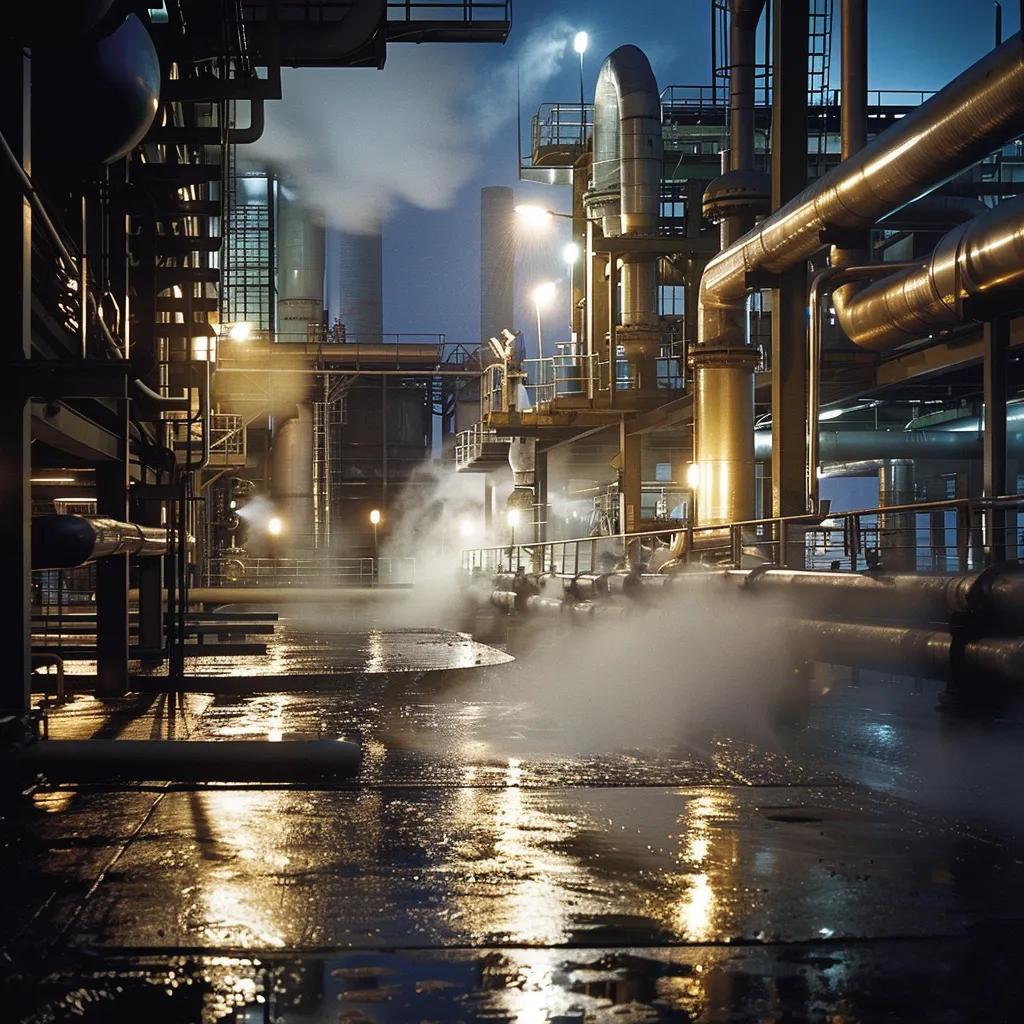
- Outdoor oil and gas installations with corrosive air and salt spray
- High-temperature furnace controls and exhaust systems
- Heavy-duty machinery in steel mills or mining operations
How Do Metal Nameplates Enhance Asset Tracking and Long-Term Identification?
With decades-long legibility and minimal maintenance, metal plates reduce downtime and re-labeling costs. Their ability to withstand cleaning solvents and pressure washing preserves barcodes and serial numbers.
What Are the Latest Engraving Technologies for Phenolic and Metal Nameplates?
How Does Laser Engraving Improve Precision and Durability?
Laser engraving uses focused energy to vaporize surface layers, yielding:
- Micron-level accuracy for microtext and serial numbers
- No mechanical stress on the substrate, preserving dimensional tolerance
- Permanent markings that resist wear and cleaning agents
Laser Engraving for Nameplates
Laser engraving is a precise method used for marking both metal and plastic nameplates, offering high-quality results and durability [6, 11, 12, 15, 18]. Laser marking systems create precise marks on numerous materials, including diverse metals, plastics, acrylics, and coated surfaces [6, 11, 12, 15, 18].
This citation supports the article’s discussion of laser engraving technology.
What Are the Benefits of Rotary Engraving and Chemical Etching?
- Rotary engraving: Produces deep relief ideal for high-contrast mechanical labels
- Chemical etching: Enables smooth, burr-free edges on intricate designs
What Are the Environmental and Lifecycle Cost Considerations for Phenolic vs. Metal Nameplates?
How Do Phenolic Plastic and Metal Nameplates Compare in Recyclability and Environmental Impact?
Phenolic laminates are thermoset and not recyclable but can be repurposed. Aluminum plates are 100% recyclable, requiring less energy to re-melt. Stainless steel recycling streams minimize environmental impact, making metal nameplates more sustainable over decades.
What Is the Lifecycle Cost Analysis for Both Materials?
An upfront investment in metal nameplates often yields savings through reduced downtime and maintenance expenses.
What Are the Most Frequently Asked Questions About Phenolic Plastic vs. Metal Nameplates?
What Are the Key Differences Between Phenolic and Metal Nameplates?
Phenolic nameplates provide non-conductivity, chemical resistance, and color options at lower cost, ideal for indoor electrical applications. Metal plates deliver unmatched durability, temperature tolerance, and recyclability for outdoor and heavy-duty environments.
Which Material Offers Better Durability and Chemical Resistance?
Metal nameplates resist impact, UV, and corrosive chemicals more effectively. Phenolic excels against organic solvents and offers strong electrical insulation but is less resistant to abrasion and UV.
How Do Costs Compare Between Phenolic Plastic and Metal Nameplates?
Phenolic laminates cost less initially but may require replacements every 5–7 years. Metal plates cost more upfront but last 15–20 years, reducing lifecycle expenses.
What Are the Best Applications for Each Nameplate Material?
Use phenolic for indoor electrical panels, valve tags in solvent-rich areas, and safety signage. Deploy metal plates for outdoor equipment, high-temperature controls, and long-term asset tracking.
How Do Engraving Methods Differ for Phenolic and Metal Nameplates?
Laser engraving yields high-precision text on both materials with minimal substrate damage. Rotary engraving offers deep cuts suited to thicker phenolic and brass, while chemical etching excels at smooth, burr-free legends on stainless steel and aluminum.
How to Choose the Right Custom Engraved Nameplate for Your Industrial Needs?
What Factors Should Influence Your Material Selection?
Consider:
- Operating Environment – Temperature extremes, UV exposure, chemical contact
- Electrical Requirements – Need for insulation or conductive mounting
- Budget Constraints – Upfront vs. long-term cost analysis
- Regulatory Compliance – OSHA lockout/tagout and industry-specific standards
How Can Customization Enhance Your Nameplate’s Effectiveness?
Tailor color coding, logo placement, and text size to improve readability and brand consistency. Precise engraving methods ensure barcodes and serial numbers remain scannable under routine cleaning and inspection.
Where to Get Expert Advice and Custom Quotes for Nameplates?
Partner with specialized identification providers that combine material science expertise and precision engraving. Consult product catalogs, request samples of phenolic and metal tags, and seek turnkey solutions that include installation guidance and compliance documentation.
Custom engraved phenolic plastic and metal nameplates each offer unique advantages for industrial identification. By mapping performance attributes—durability, cost, environmental resistance, electrical safety, and aesthetics—against specific use cases, facility managers can optimize asset marking strategies. Whether insulating live panels with color-coded phenolic tags or securing outdoor equipment with stainless steel plates, selecting the right material and engraving method ensures long-lasting, compliant, and cost-effective identification solutions.
¹ For more details on laser engraving phenolic laminates, see “laser-engraved phenolic tags” at https://phenoliclabels.net/laser-engraved-phenolic-tags/.

